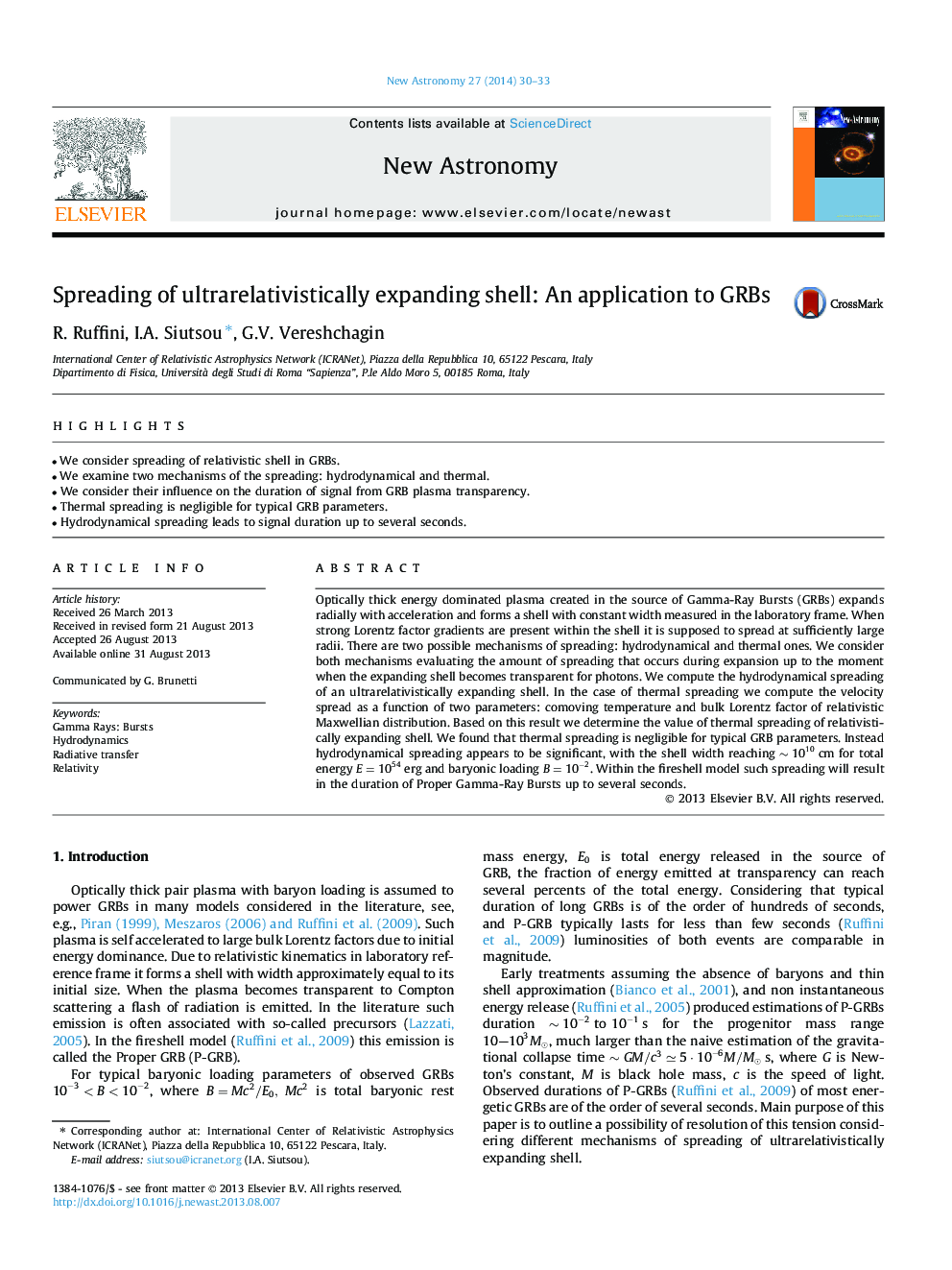| Article ID | Journal | Published Year | Pages | File Type |
|---|---|---|---|---|
| 1779048 | New Astronomy | 2014 | 4 Pages |
•We consider spreading of relativistic shell in GRBs.•We examine two mechanisms of the spreading: hydrodynamical and thermal.•We consider their influence on the duration of signal from GRB plasma transparency.•Thermal spreading is negligible for typical GRB parameters.•Hydrodynamical spreading leads to signal duration up to several seconds.
Optically thick energy dominated plasma created in the source of Gamma-Ray Bursts (GRBs) expands radially with acceleration and forms a shell with constant width measured in the laboratory frame. When strong Lorentz factor gradients are present within the shell it is supposed to spread at sufficiently large radii. There are two possible mechanisms of spreading: hydrodynamical and thermal ones. We consider both mechanisms evaluating the amount of spreading that occurs during expansion up to the moment when the expanding shell becomes transparent for photons. We compute the hydrodynamical spreading of an ultrarelativistically expanding shell. In the case of thermal spreading we compute the velocity spread as a function of two parameters: comoving temperature and bulk Lorentz factor of relativistic Maxwellian distribution. Based on this result we determine the value of thermal spreading of relativistically expanding shell. We found that thermal spreading is negligible for typical GRB parameters. Instead hydrodynamical spreading appears to be significant, with the shell width reaching ∼1010∼1010 cm for total energy E=1054E=1054 erg and baryonic loading B=10-2B=10-2. Within the fireshell model such spreading will result in the duration of Proper Gamma-Ray Bursts up to several seconds.
